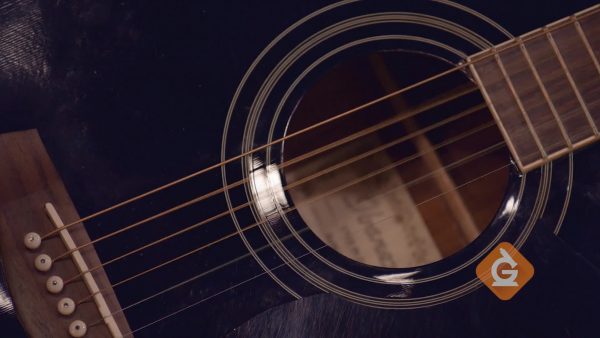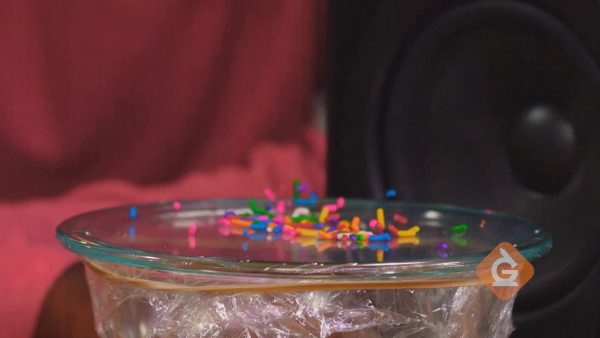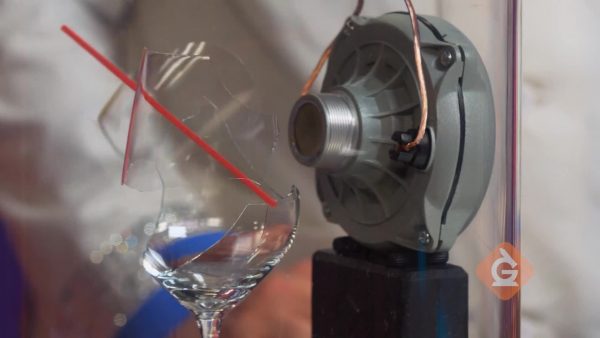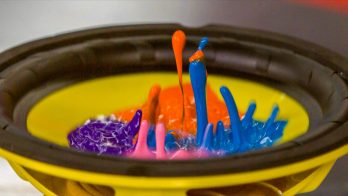Sound is caused by vibrations that travel through the air. These vibrations can cause other things to vibrate, too. We hear sound with our sense of hearing, which is made possible by our ears.
To better understand how sound works…
LET’S BREAK IT DOWN!
Instruments make vibrations.

When you play an instrument such as a guitar, you are causing vibrations that make sound. The guitar strings move back and forth really fast when you pluck them.

Your voice makes vibrations.

If you place your hand on your throat and hum, you can feel the vibrations of your vocal cords. Your vocal cords vibrate to make sound.

It’s hard to see vibrations.

You can’t always see sound waves because they are vibrating so fast. Placing a vibrating tuning fork in water can help you see the vibrations.

Sound makes some objects vibrate.

Loud sounds can make other things move. If you place sprinkles on a flat surface near a speaker, the sprinkles will vibrate.

Some very loud sounds cause strong vibrations.

Some sound vibrations are so strong they can even break glass! A very loud and deep sound caused this glass to break.


































































































































 Select a Google Form
Select a Google Form







 GENERATION GENIUS
GENERATION GENIUS




